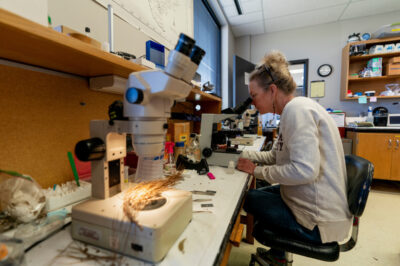Search results for: “homeowners guide to pests of peaches plums and pecans”
- PublicationMany home remedies, products, and treatments could be considered ‘organic.’ However, several state and federal agencies and some organizations now offer ‘organic’ standards to certify products. This publication discusses different...
- PublicationProtecting elm trees in from elm bark beetle is crucial on the Texas high plains. This publication will provide you with the knowledge to recognize, understand, and manage the bark...
- PublicationMany insects feed and make their homes in the bark, trunks, and branches of shade trees and shrubs in Texas. Insect borers belong to several different insect groups including a...
- LabThe Texas Plant Virus Diagnostic Laboratory focuses on the diagnosis of plant viruses through the testing of plants and insect tissue samples for known and novel viral agents. The lab...

- ProgramThe Plant Pathology and Microbiology (PLPM) Extension program provides applicable and essential services through subject-matter experts of plant health management, plant diseases, plant-microbe interactions and the environmental sciences. Specialists are...

- PublicationThis Excel file has several spreadsheets that are designed to provide tools to aid in determining application rates and costs for herbicides, insecticides, and adjuvants (surfactants) commonly used in the...
- PublicationThese directions correspond with the Excel spreadsheet titled "Herbicide and Insecticide Cost Per Acre Spreadsheet" (ANSC-PU-430). The Excel file has several spreadsheets that are designed to provide tools to aid...
- PublicationIntegrated pest management (IPM) aims to prevent pest problems through all available control tactics: cultural, mechanical or physical, biological, and chemical control. This factsheet discusses methods for each of the...
- PublicationAlthough algae do not infect turfgrass directly, they are highly invasive and out-compete grasses for space and nutrients. Algal scum can be a chronic problem, especially on turf with poor...
- PublicationThe visible symptoms of anthracnose on turf are variable. Typically, it is recognized by damaged turf in a pattern of dots, circles, or irregularly shaped patches-ranging in size from several...

